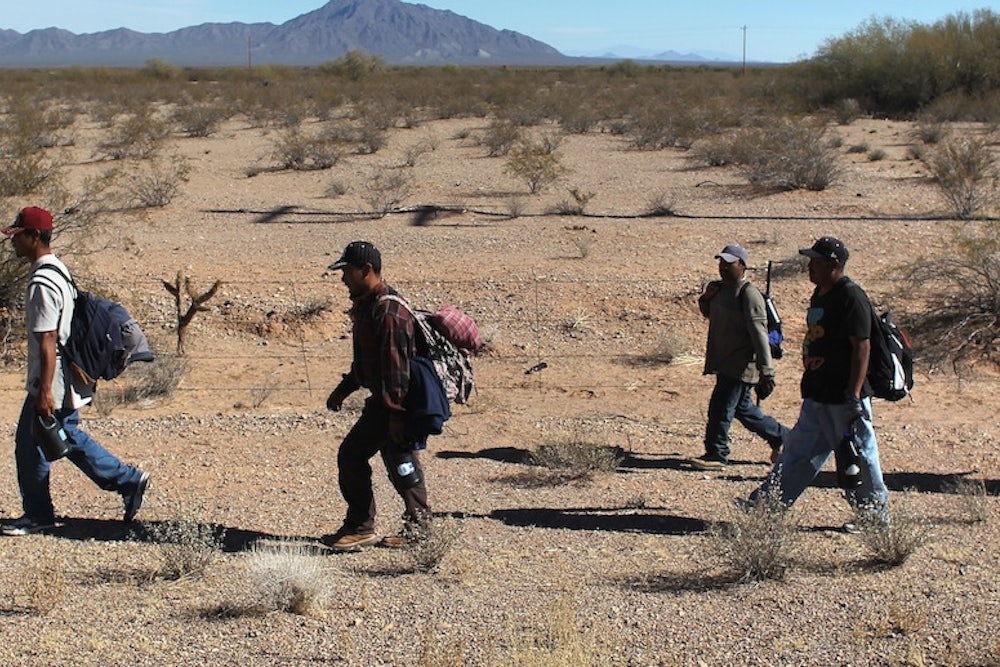This past Tuesday, Raúl Hinojosa-Ojeda—an Associate Professor in the UCLA Department of Chicana and Chicano Studies—released a report arguing that there is not a sudden surge in the number of unaccompanied minors cross the border, driven by Central American violent crime—or, more specifically, that this is the wrong way to look at what’s going on at the border. Hinojosa-Ojeda has held policy research positions at the World Bank, the White House Council of Economic Advisers, InterAmerican Development Bank, and others.
Sarah Sloat: It’s been reported that numbers are going up—why do you feel that information is misleading?
Raúl Hinojosa-Ojeda: Ten years ago, there were twice as many child migrants as there are now. While the number of children being apprehended at the border has increased over the last few years, the total number of apprehended children actually decreased over the last decade. According to a report published by the Congressional Research Service, 114,563 children were apprehended in 2005. Comparatively, the U.S. Customs and Border Protection claims that 47,397 children were apprehended in 2013.

SS: So why is the arrival of children at the border now being labeled a “surge”?
RHO: Before, [border authorities] never bothered to ask kids whether they were unaccompanied or not, so the change is really in the way the kids are being classified. Now, the law forces them to determine if they are unaccompanied—and lo and behold, among the kids who are apprehended, we went from 6.8 percent unaccompanied in 2005 to 82 percent in 2013.
The Wilberforce Trafficking Victims Protection Reauthorization Act (TVPRA) of 2008 requires that all Unaccompanied Alien Children (UAC) from non-contiguous borders [all countries but Mexico and Canada] to have their case heard in immigration court. The impact of TVPRA is that Border Patrol has been forced to more accurately classify apprehended children. So in a sense, the numbers of apprehended children is not a crisis per se; it’s a result of the U.S. government finally doing the right thing, which is interviewing people and giving them due process.
SS: But, despite a decline over the course of the decade, the numbers have gone up in recent years. Why?
RHO: Migration is entirely driven by the business cycle. The global recession reduced migration to the U.S.; the economic recovery has prompted migration to resume. I predict that in the next three to four years, as the economy recovers even more, there will be twice as many children coming. Immigration is like a wave function, and this current rise is entirely driven by the decline in unemployment. The unemployment rate of Latinos in the U.S. has started to go down, so immigration has started to go up, which means that there are more apprehensions of undocumented migrants.

SS: What is your response to the thinking that the children are trying to cross the border primarily to escape gang violence?
RHO: This is a humanitarian emergency, but this has actually been a chronic humanitarian emergency that is only now coming to light. Violent crime and poverty generally encourage migration, but they are not the primary forces. These countries have very different levels and patterns of violence—it’s been six years since the Honduran murder rate first peaked, why are we now seeing this number of Honduran children? Of course, gangs are an issue; having very few options and high unemployment leads to gang membership. The annual revenue of El Salvador’s two largest gangs, MS-13 and 19th Street, divided among the members, is just over $1,300 per gang member per year. Joining a gang is an effect of limited employment opportunities. But the more influential factors are economic forces and the U.S. job market.
SS: On August 1, the White House released a statement highlighting their (and the Guatemalan, El Salvadorian, Mexican, and Honduran) response to “the influx of children being apprehended” at the Southwest border: Increased border protection and processing centers in the U.S. and media campaigns to discourage migration in Central America. Do you think these steps will affect the flows of migration?
RHO: The migration phenomena is not being driven by the proliferation of misinformation—a media campaign is completely absurd. What will pass for an alleviating measure is more money for border enforcement.

But this will have the effect of making it harder for all immigrants—documented and undocumented—to cross the border. Immigrants who came to the U.S. for seasonal agriculture work won't be able return home during off-seasons and holidays like they used to; children of the detained immigrants will attempt to join them in the U.S. Hopefully, there is a silver lining to the current situation: It will help us focus back on what’s important—comprehensive immigration reform.
This interview has been edited and condensed. All charts taken from Raúl Hinojosa-Ojeda's report, "Five Lessons Learned From A Manufactured Crisis," which draws on data from the Congressional Research Service, Department of Homeland Security, Customs and Border Patrols, Department of Justice, Department of Homeland Security, Department of Labor and will soon be published.
